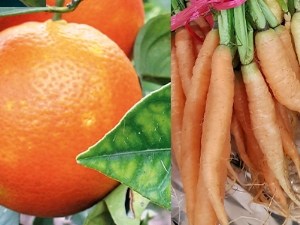TWO STEPS TO POLLINATION
For apple trees, as for other self-incompatible species (allogamous), pollination is an essential step to obtain quality fruit. The fact that it is impossible for apple trees to self-pollinate imposes two constraints to obtain fruit. The first one is to have compatible pollen. The second is to have a vector to transfer the pollen, in this case, insects. This particularity means that the fruit grower has to set up a specific strategy for each cultivated variety that takes these characteristics into account.
Providing pollen for a commercial variety requires choosing another variety, called a pollinizer, which must meet at least two essential criteria: it must be compatible and have synchronous flowering. The grower will also have to choose a pollinating variety that flowers regularly, that is more tolerant or resistant to parasites and pests than the main variety, that is in perfect health (viruses reduce the germinative power of the pollen) and that matures at the same time as or after the main crop variety.


